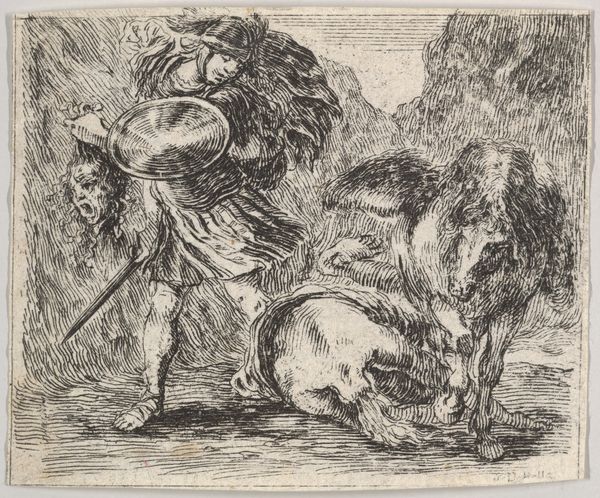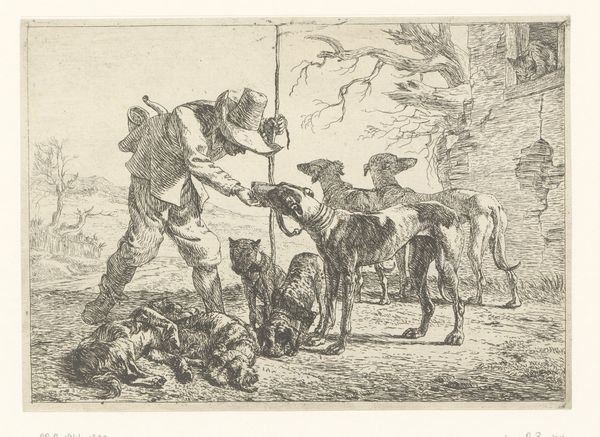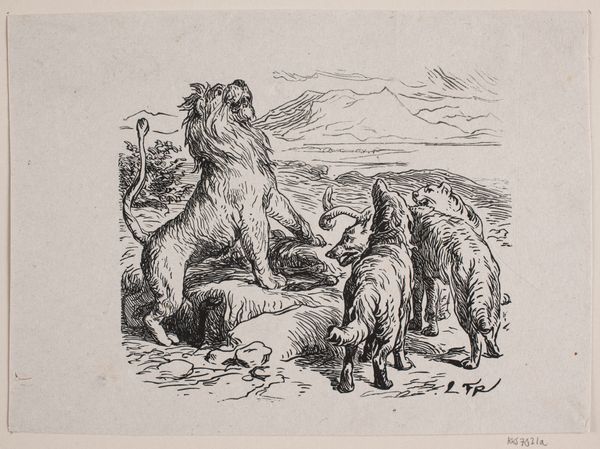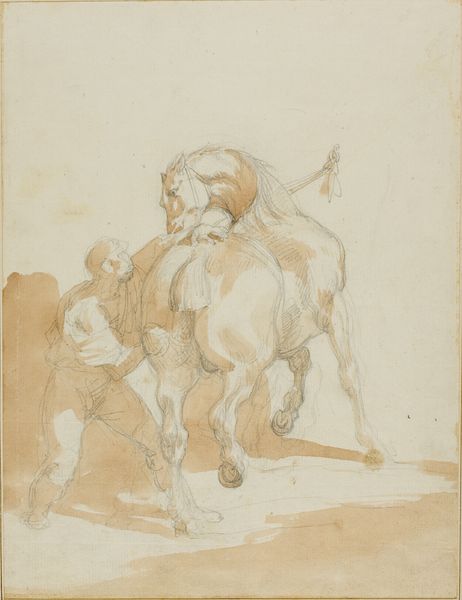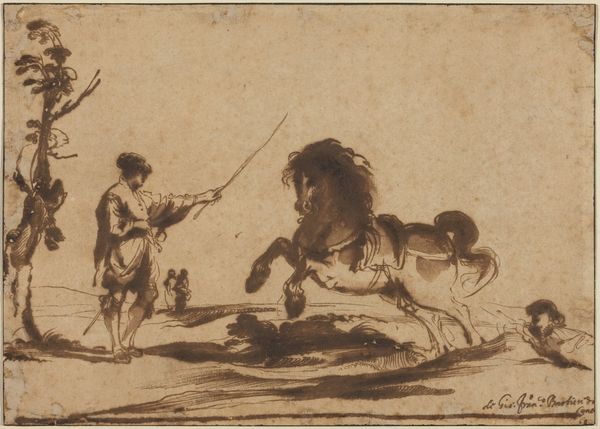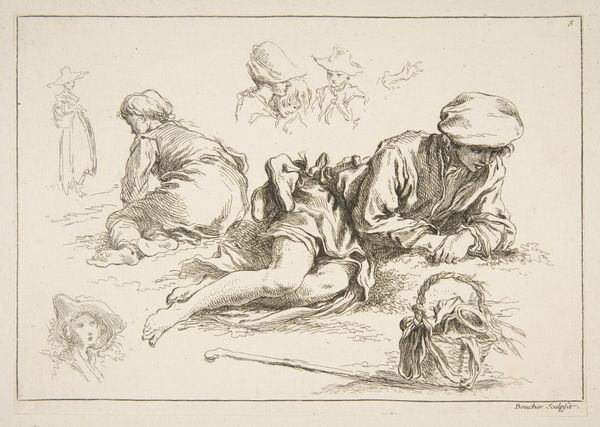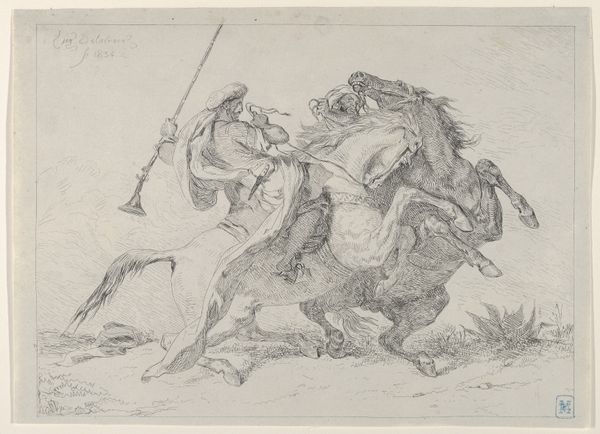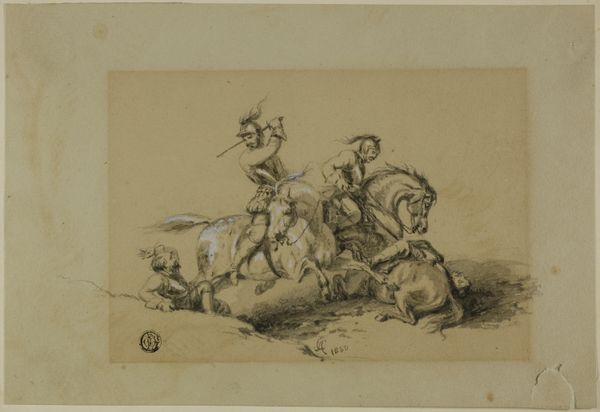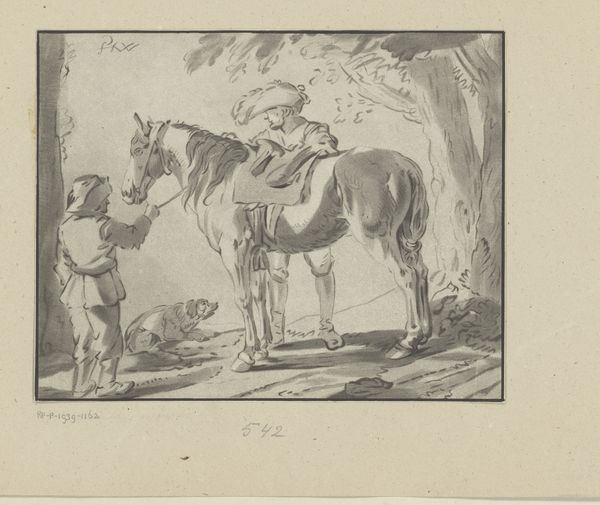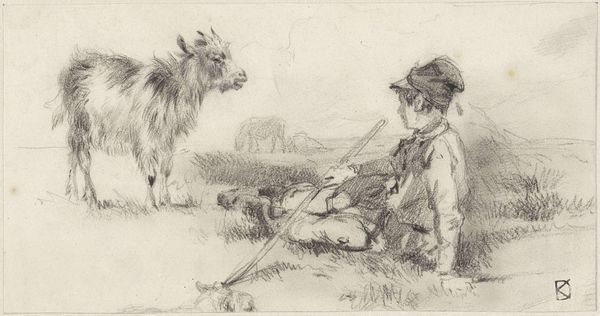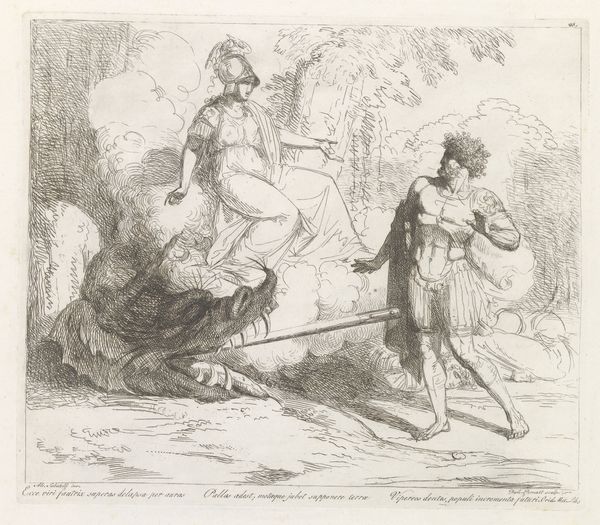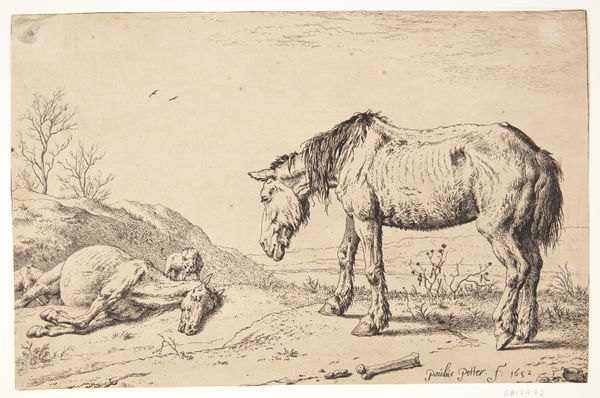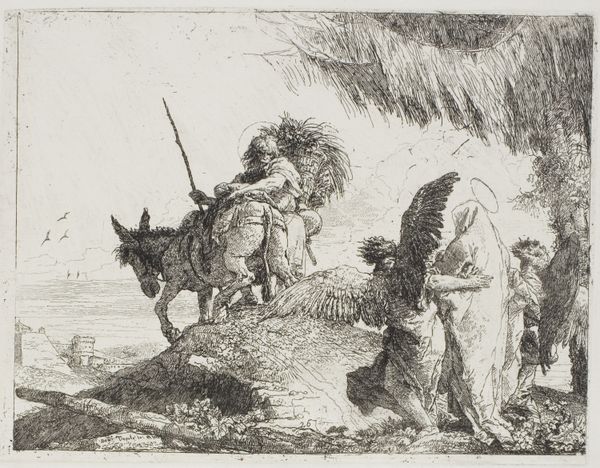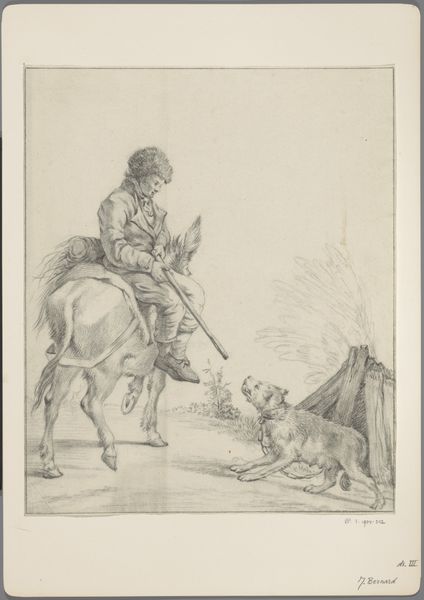
Copyright: National Gallery of Art: CC0 1.0
Curator: The energy captured in this etching is remarkable. Editor: Indeed. "Soldier with Horse and Attendant" is believed to have been created by Giovanni Battista Tiepolo around 1785. As you can see, it is an etching, making wonderful use of line. My first impression is its sketch-like immediacy, almost as if it were capturing a fleeting moment on campaign. Curator: It speaks to power dynamics, doesn't it? Look at the soldier’s posture, almost leaning on the horse, which in turn dwarfs the attendant. And even the dog looks up to the soldier. This configuration reflects very strict, defined class boundaries. I can't help but analyze how the gaze operates here. Who are we meant to identify with? Are we witnesses, or are we part of the scene? Editor: That’s fascinating. Contextually, it comes at a time of enormous social and political upheaval across Europe. We see the beginnings of the questioning of such established hierarchies. Are there anxieties present about this rigid social order? Tiepolo was working for aristocratic patrons—was he, perhaps unconsciously, questioning that very system? Curator: Or perhaps celebrating it? Is it possible the work valorizes strength, lineage, and the natural order of things? The horse, in particular, becomes a symbol of power, tamed and directed by the soldier, its musculature displayed like a weapon. The image’s composition places the horse as the strongest component, and the gaze of both the soldier and the dog, as if awaiting direction, add a narrative and dynamism. Editor: That’s very insightful. It’s important to remember that art of this period played a crucial role in constructing public perception and reinforcing social norms. Etchings, as relatively accessible forms of art, had the potential to reach a wide audience. We should definitely be asking whose narratives are amplified, and which are silenced, within Tiepolo’s vision of soldiery. Curator: Looking at Tiepolo's place in the broader story of art history, the print allows a broader, diverse analysis on patriarchy and even masculinity, given his traditional and often classical subjects. Editor: Ultimately, the strength of Tiepolo's “Soldier with Horse and Attendant” lies in its ambiguity and the conversations it can trigger. Curator: I agree completely. A deceptively simple etching that reveals layers upon layers.
Comments
No comments
Be the first to comment and join the conversation on the ultimate creative platform.
